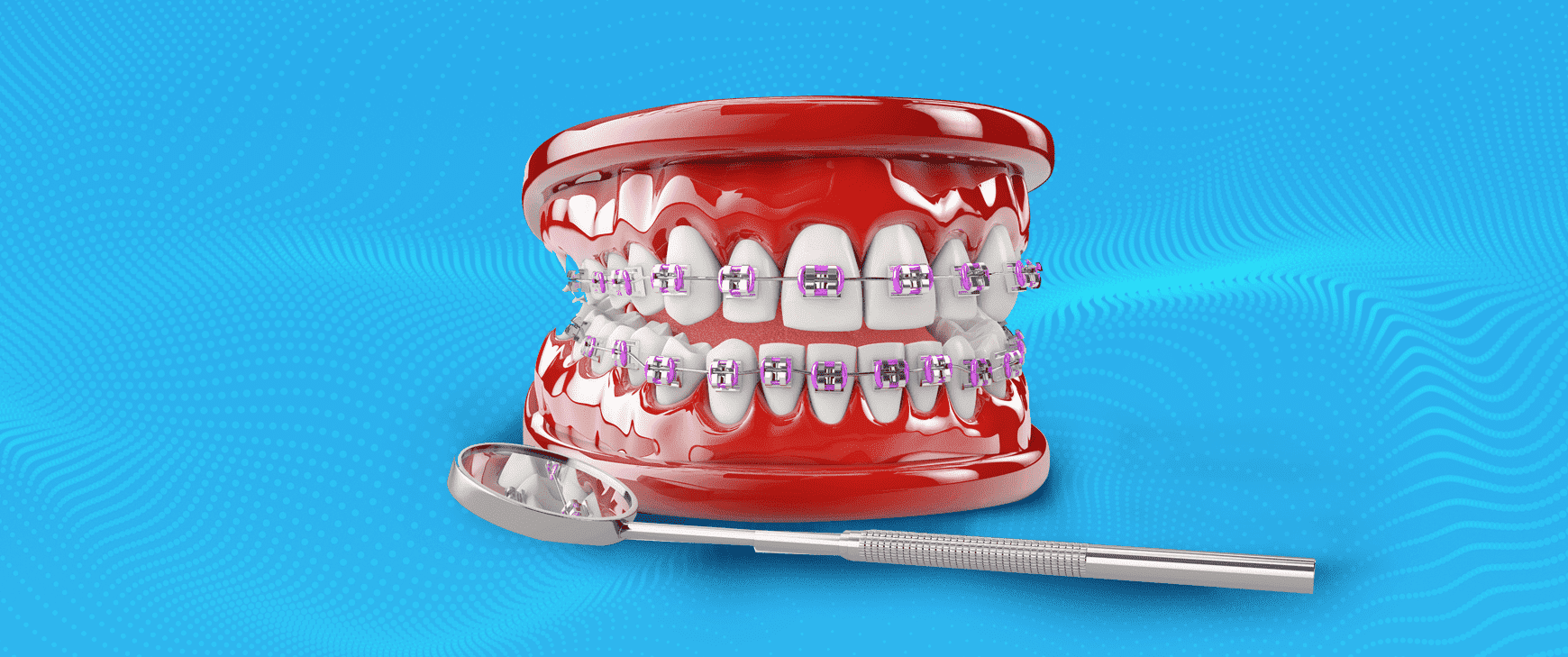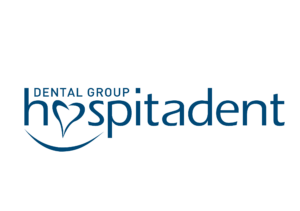Braces Treatment
Salih ÖNDER2023-10-26T15:08:22+03:00Crowded teeth are one of the problems that people are most uncomfortable with in their smiles today. In addition, other factors such as intermittent teeth and incompatibility of the jaws can negatively affect both the tooth alignment and general facial aesthetics and impair chewing function and external appearance. The solution of all these tooth alignment and jaw structure problems is possible with orthodontic treatment, also known as wire therapy.
Dental Group Hospitadent implements treatment methods using the latest technologies in all its branches with its expert and qualified physician staff.
You can apply to Hospitadent branches for orthodontic treatment and all your other oral and dental health needs.
What is orthodontic treatment (braces treatment)?
The treatment methods in which the disorders and disproportions in the tooth alignment and jaw structures are corrected by using applications called appliances, braces and brackets attached to the teeth are generally called orthodontic treatment (braces treatment).
What are the advantages of orthodontic (braces treatment) treatment and why is it done?
Incompatibilities in tooth alignment and jaw structures create some deficiencies not only aesthetically but also functionally.
One of these functional deficiencies is the inability to perform the chewing movement correctly. As a result of wrong or incomplete chewing movements, various problems may occur in both the facial muscles, jaw joints and digestive system.
In addition, aesthetic disorders seen in the teeth, which are a large part of facial aesthetics, can cause people to experience both psychological and social problems.
It is possible to avoid these problems in the long term with orthodontic treatment.
In which cases is orthodontic treatment (braces treatment) performed?
- In cases of crowding due to narrowness of space caused by small jaws or too large teeth
- In cases of skeletal incompatibility called class 2, where the upper jaw is more anterior than the lower jaw
- In cases of skeletal incompatibility called class 3 where the lower jaw is positioned ahead of the upper jaw
- In cases where there is a gap between the lower and upper front teeth when the teeth are closed, which is called open bite
- In cases where the upper teeth, called deep bite, cover the lower teeth excessively
- Incompatibility in the jawbones caused by long-term use of bottles and pacifiers in early childhood or habits such as thumb sucking
- In cases where the sizes of the teeth are small compared to the width of the jaw and there are gaps between the teeth called diastema.
Who is orthodontic treatment (braces treatment) for?
Orthodontic treatment (braces treatment) can be applied to patients of all age groups. Although there is a misconception among the public that only young people and children can benefit from this treatment, in fact, orthodontic treatment is applied in every period of human life. In cases where only some skeletal disorders are accompanied, it may be necessary to benefit from surgical procedures called “orthognathic surgery” in patients with complete bone development.
How long does orthodontic treatment (braces treatment) take?
The duration of orthodontic treatment is related to the type and level of the existing disorder. Orthodontic treatment can be completed in a few months in cases where the treatment is simpler, such as minor crowding, while in more difficult cases accompanied by skeletal disorders, the treatment may take several years.
What should be considered during orthodontic treatment (braces treatment)?
Oral hygiene is very important during orthodontic treatment. In cases where good oral hygiene cannot be provided, teeth can rot much faster during orthodontic treatment. The accumulation of plaque that may occur around the brackets and wires used can damage both teeth and gums. For this reason, standard toothbrushing is not sufficient to provide oral hygiene during orthodontic treatment. As recommended by physicians, it is also necessary to properly clean around the brackets and wires with products for oral hygiene such as interface brushes, single-bundle brushes, special dental floss.
Especially during fixed orthodontic treatment, hard and crusty foods such as plums, nuts and these should not be consumed. Since these foods will exert strong pressure on the brackets, they can cause them to break and separate from the teeth. In such cases, a doctor should be consulted without wasting time and the treatment should be continued by replacing the broken bracket.
Consumption of acidic beverages negatively affects the adhesion of teeth and brackets. For this reason, it is necessary to stay away from acidic beverages during orthodontic treatment.
If removable removable appliances are used in the treatment, in order for the treatment to progress quickly, these appliances should be kept in the mouth except when eating.
n should not be removed. At the same time, the correct use and cleaning of the appliances as described by the physician is also important.
During orthodontic treatment, the stages of treatment are usually carried out with a physician’s control once a month. For this reason, care should be taken to attend physician appointments regularly.
What should be considered after orthodontic treatment (braces treatment)?
After orthodontic treatment, sometimes there may be a small amount of return in the crowding. As a precaution against these, protective appliances or protective wires attached to the back of the teeth are applied to the patients. Even if the treatment is terminated, it is important to check the physicians twice a year in order to avoid any return.
Is orthodontic treatment (braces treatment) safe and how is it done?
Before orthodontic treatment, it is very important to examine the patient’s teeth and jaw structures and to determine the treatment need correctly. For this reason, a detailed intraoral examination is performed first. In addition, jaw models are obtained by taking measurements, and the closing shape of the teeth is determined by means of special waxes and applied to these models.
If there are problems such as decayed teeth and tartar in the patient’s mouth, these problems are resolved before orthodontic treatment is started.
Radiological images, namely x-ray films, make a great contribution to the classification of existing skeletal and dental disorders. Radiologic images called “cephalometric” and “panoramic” chin films are generally used to determine the need for orthodontic treatment.
Orthodontic disorders are determined exactly by the angular calculations made by the physician on these x-ray films.
In cases where there are crooked teeth, which is called stenosis of the jaw, sometimes the jaws can be expanded by using expander appliances in order to align the teeth correctly. This method is generally used in young patients who have not yet completed their jaw development.
In cases where the necessary space cannot be provided in this way, tooth extractions can be performed.
Sometimes extraoral applications can be used in orthodontic disorders due to the position of the lower or upper jaw.
After solving the problems related to the lack of space and skeletal positions, it comes to the stage of ensuring the correct alignment and closure of the teeth. At this stage, special materials and wires called brackets and bonded to the teeth are used. While the appliances are generally used in removable ways, the brackets and the wires attached to them are fixed in the mouth. For this reason, bracket treatments are referred to as fixed orthodontic treatment.
While conventional metal brackets can be used in fixed orthodontic treatments, aesthetic ceramic brackets can also be used according to the patient’s request. In some cases, the method known as “lingual orthodontics” can be applied, in which the brackets are attached to the back parts of the teeth facing the tongue instead of the front faces.
Sometimes, special tires are used together with brackets and wires in order to close the teeth correctly and to create the correct alignment of the teeth.
Dental Group Hospitadent provides services in all branches of orthodontic treatments, in the light of current technologies and with its expert physician staff, as in all other oral and dental health treatments.
Treatment Summary
Number of Transactions
2-3
Return to Work Process
Now
Processing Time
10 Days
Full Recovery Process
Now
Anesthesia Method
Local anesthesia
Persistence of Results
5 Years
Sensitivity Process
Non
Eating - Drinking Process
2 Hours Later
Note: *The information and recommendations on this page are for informational purposes only. Please consult your doctor for diagnosis and treatment. WhatsApp line.
Bütün İşimiz Diş


